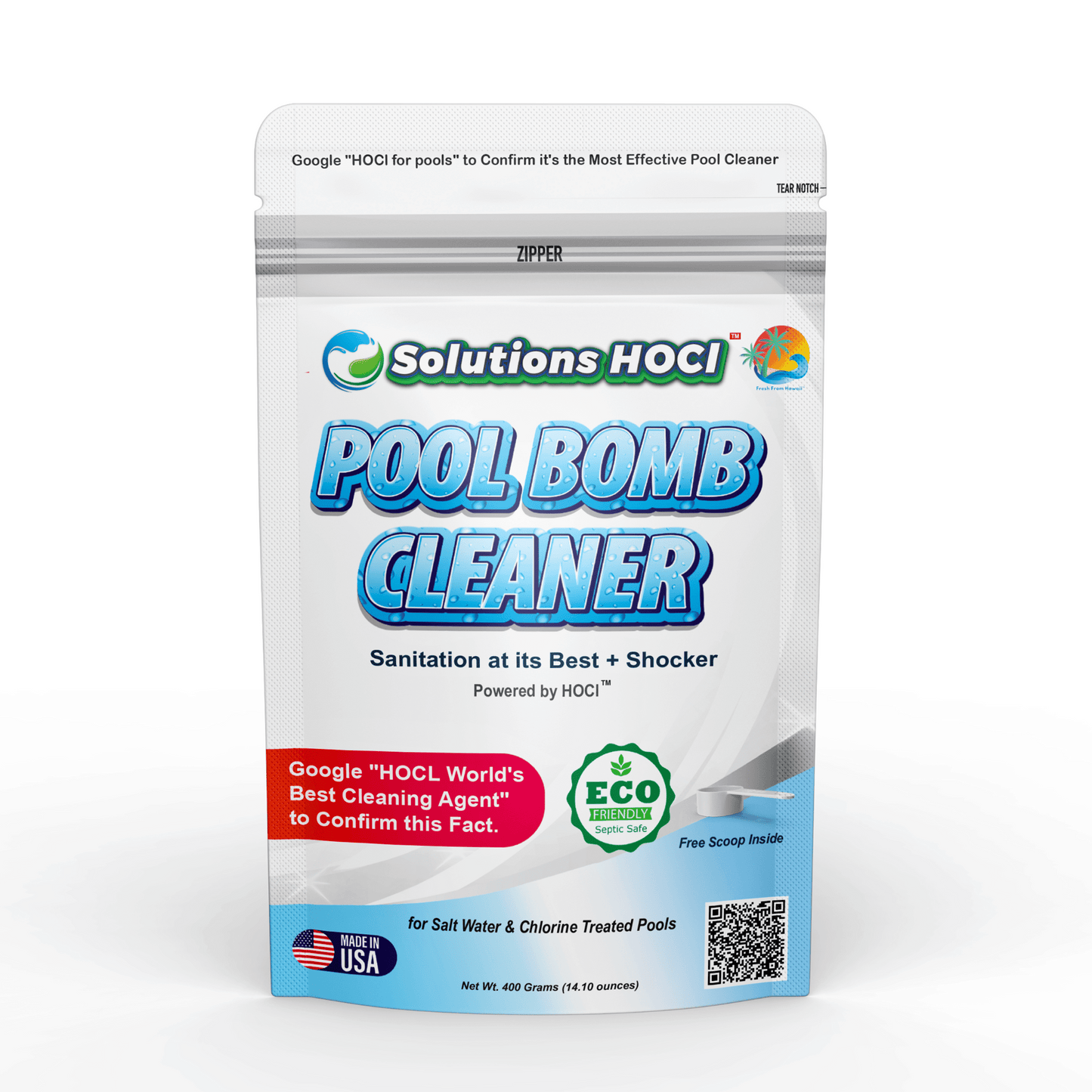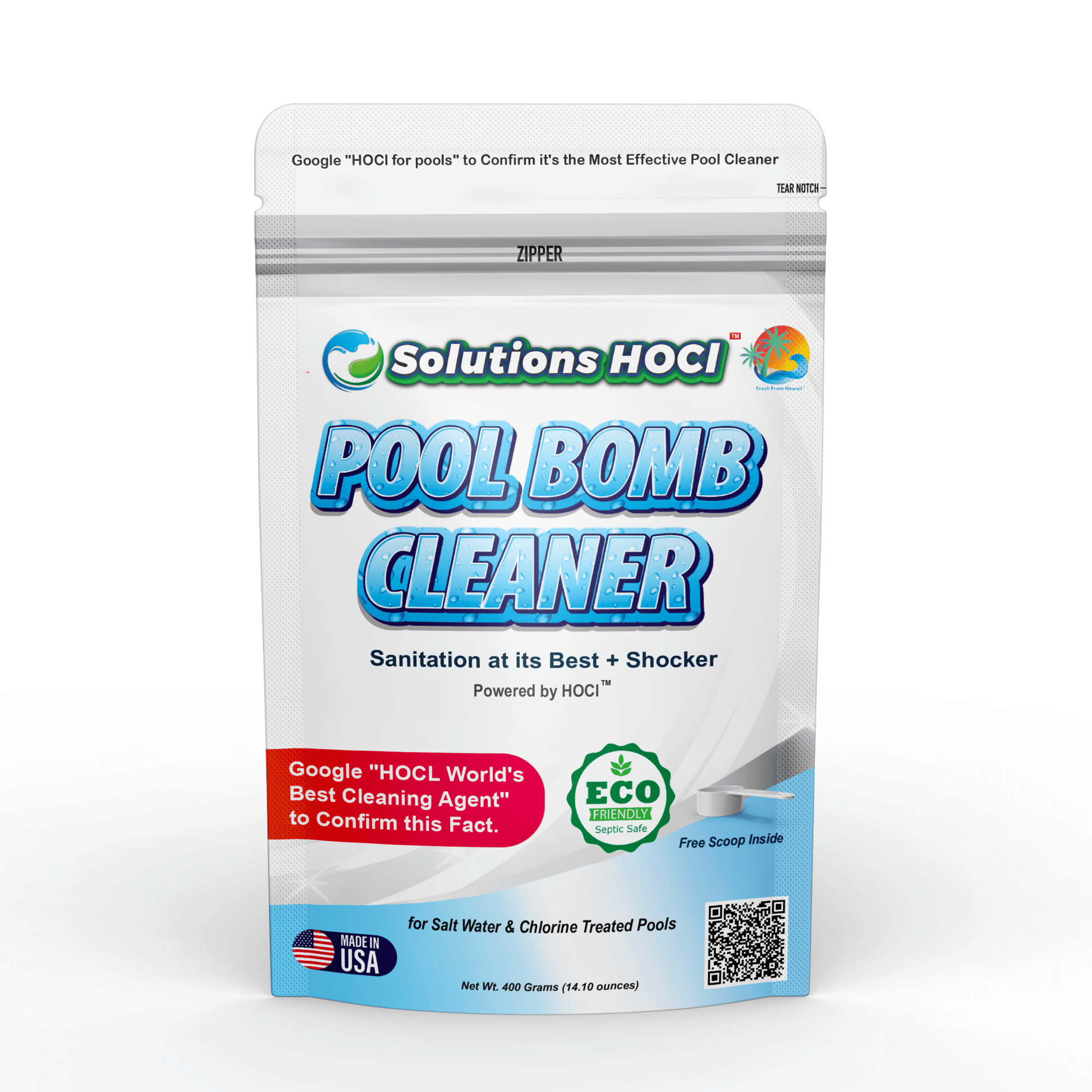








Hypochlorous acid (HOCl) and chlorine are both utilized for cleaning swimming pools.
HOCl is selected for its chemical properties and is typically regarded as safe when used as directed. When applied, HOCl interacts with proteins in organic materials in water, leading to the formation of chloramines, which may have a smell similar to bleach or a swimming pool.
HOCl is widely used where a reduction of organic material is sought. Chlorine, also known as Free Available Chlorine (FAC), is available in different forms, including HOCl and hypochlorite (OCl-). Chlorine is commonly employed as a disinfectant and can lead to by-products in pipes, especially in water containing high levels of dirt or organic matter.
Furthermore, chlorine is known to dissipate quickly in water systems. In comparison, HOCl and the OCl- form of chlorine are used more effectively depending on their application and environmental conditions.

HOCl is often utilized in chlorination processes.
It is important to recognize that the performance and safety of pool cleaning products can vary. Users are advised to follow manufacturer instructions carefully and consider consulting professionals for appropriate pool maintenance.
Keep in mind that many "pool professionals" typically receive training focused on traditional chlorine-based products. For a broader understanding of the various options available, including the use of hypochlorous acid (HOCl) in pool cleaning, you will find it beneficial to study our "Scientific Studies" section. This section includes a collection of Scientific Studies, University Reports, and Government Studies that provide insights that prove how effective HOCL can be in maintaining clean swimming pools and spas.
Scientific Studies for Pool Cleaner
- Fukuzaki S. (2023). Uses of gaseous hypochlorous acid for controlling microorganisms in indoor spaces. Journal of microorganism control, 28(4), 165–175. https://doi.org/10.4265/jmc.28.4_165
- Fukuzaki S. (2006). Mechanisms of actions of sodium hypochlorite in cleaning and disinfection processes. Biocontrol science, 11(4), 147–157. https://doi.org/10.4265/bio.11.147
- Stubbs, A. D., Lao, M., Wang, C., Abbatt, J. P. D., Hoffnagle, J., VandenBoer, T. C., & Kahan, T. F. (2023). Near-source hypochlorous acid emissions from indoor bleach cleaning. Environmental science. Processes & impacts, 25(1), 56–65. https://doi.org/10.1039/d2em00405d
- Rossi-Fedele, G., Guastalli, A. R., Doğramacı, E. J., Steier, L., & De Figueiredo, J. A. (2011). Influence of pH changes on chlorine-containing endodontic irrigating solutions. International endodontic journal, 44(9), 792–799. https://doi.org/10.1111/j.1365-2591.2011.01911.x
- D'Auria, F. D., Simonetti, G., & Strippoli, V. (1989). Studio dell'attività antimicrobica esercitata dal dicloroisocianurato di sodio Antimicrobial activity exerted by sodium dichloroisocyanurate]. Annali di igiene : medicina preventiva e di comunita, 1(6), 1445–1458.
- van Klingeren, B., Pullen, W., & Reijnders, H. F. (1980). Quantitative suspension test for the evaluation of disinfectants for swimming pool water: experiences with sodium hypochlorite and sodium dichloroisocyanurate. Zentralblatt fur Bakteriologie. 1. Abt. Originale B, Hygiene, Krankenhaushygiene, Betriebshygiene, praventive Medizin, 170(5-6), 457–468.
- Erdinger, L., Kirsch, F., & Sonntag, H. G. (1999). Chlorate as an inorganic disinfection by product in swimming pools. Zentralblatt fur Hygiene und Umweltmedizin = International journal of hygiene and environmental medicine, 202(1), 61–75.
- Yamashita, T., Sakae, K., Ishihara, Y., Isomura, S., & Takeuchi, K. (1990). [Nihon koshu eisei zasshi] Japanese journal of public health, 37(12), 962–966.
- Koski, T. A., Stuart, L. S., & Ortenzio, L. F. (1966). Comparison of chlorine, bromine, iodine as disinfectants for swimming pool water. Applied microbiology, 14(2), 276–279. https://doi.org/10.1128/am.14.2.276-279.1966
- Koski, T. A., Ortenzio, L. F., & Stuart, L. S. (1967). Effect of algicidal quaternaries on the germicidal activity of chlorine on swimming pool water. Applied microbiology, 15(6), 1291–1295. https://doi.org/10.1128/am.15.6.1291-1295.1967
- Fitzgerald, G. P., & DerVartanian, M. E. (1969). Pseudomonas aeruginosa for the evaluation of swimming pool chlorination and algicides. Applied microbiology, 17(3), 415–421. https://doi.org/10.1128/am.17.3.415-421.1969
- Hsu, C. S., & Huang, D. J. (2015). Disinfection of herbal spa pool using combined chlorine dioxide and sodium hypochlorite treatment. Environmental monitoring and assessment, 187(2), 34. https://doi.org/10.1007/s10661-014-4242-3








